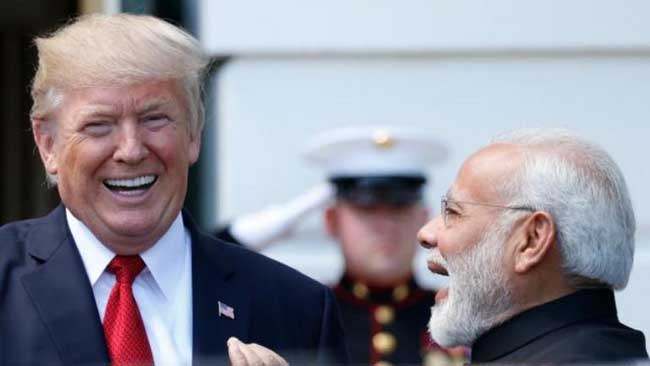No explanation was offered but the Republic Day parade on January 26 is around the time when US presidents usually present their annual report to the Congress, a statement of achievements of the past year and plans for the next, called the State of the Union address.
New York, October 30:
US president Donald Trump will be unable to attend the Republic Day parade on Prime Minister Narendra Modi’s invitation because of “scheduling constraints”, the White House has said but stressed the “strong personal rapport” shared by the two leaders.
No explanation was offered but the Republic Day parade on January 26 is around the time when US presidents usually present their annual report to the Congress, a statement of achievements of the past year and plans for the next, called the State of the Union address.
Barack Obama, who became the first American president to attend the Republic Day parade in 2015, had moved up his address to January 20 from the usual end-of-month slot he had favoured thus far. But it was not clear if Trump’s “scheduling constraints” included the address.
“President Trump was honored by Prime Minister Modi’s invitation for him to be Chief Guest of India’s Republic Day on January 26, 2019, but is unable to participate due to scheduling constraints,” a White House spokesperson said in a statement to the Hindustan Times on Monday.
But the spokesperson stressed the personal rapport shared by the leaders, possibly to prevent the US’ decision from being spun as a snub, as it might be given recent tensions in ties over trade and American threats of sanctions for buying Russian defence equipment and crude oil from long-time supplier Iran.
“The President enjoys a strong personal rapport with Prime Minister Modi developed through two meetings and several phone calls and remains committed to deepening the US-India strategic partnership,” the spokesperson said.
“The President very much looks forward to meeting Prime Minister Modi again at the earliest opportunity.”
India had felt encouraged to invite Trump to the parade partly perhaps because of the success of Obama’s visit in terms of optics and impact on ties and partly by Trump’s own enthusiastic reaction to the Bastille Day parade military parade he had witnessed in Paris in 2017.
He had returned impressed and inspired enough to order his administration to hold one in the US, overruling sceptics and critics that included the US military. The move has been since mired in concerns over costs and logistics, and, most notably, a striking lack of support and enthusiasm from others.
The Indian invitation to Trump was never made public. It was extended quietly as something that is called a “pre-invitation” among diplomats, an opening move to gauge the mood of the guest. If the response seems positive and both parties are certain of an acceptance, a formal invitation follows.
“A quiet pre-invitation ensures neither party — especially the host — is embarrassed and feels snubbed if the visit is not likely to work out,” a former White House official involved with several presidential visits said on background.
A public announcement follows months of routine comments to media queries like — “We have nothing to announce”.
But a word about those routine preliminary exchanges between the two governments leaked. And the White House was compelled in July to confirm receiving an invitation but said a decision had not been taken if the president could attend or not. And it’s official now: Trump is “unable” to attend.
Modi and Trump met first in June 2017 at the White House. The half-day of engagements included an extended one-on-one, followed by talks where they were joined by their aides. And, the world noted, they hugged. First lady Melania Trump had held a reception for the Indian delegation later.
Their next substantial meeting was on the sidelines of the ASEAN summit in Manila in November 2017, for a bilateral. There was a shorter encounter in July 2017 during the G-20 summit in Hamburg, when the two leaders met for a quick exchange, pictures of which were tweeted by Modi’s aides.
They have spoken on phone far more, starting with their first call in November, the morning after Trump’s stunning victory in the 2016 presidential elections. Modi was among the first world leaders to congratulate the president-elect beating even Theresa May, prime minister of the UK, America’s closest ally.
It was after one of their calls, in August, that India and the US announced an annual 2+2 dialogue of their defence and foreign ministers, the inaugural edition of which took place this past September after a series of postponements caused by sudden personnel changes and scheduling issues.
Courtesy: Hindustan Times




